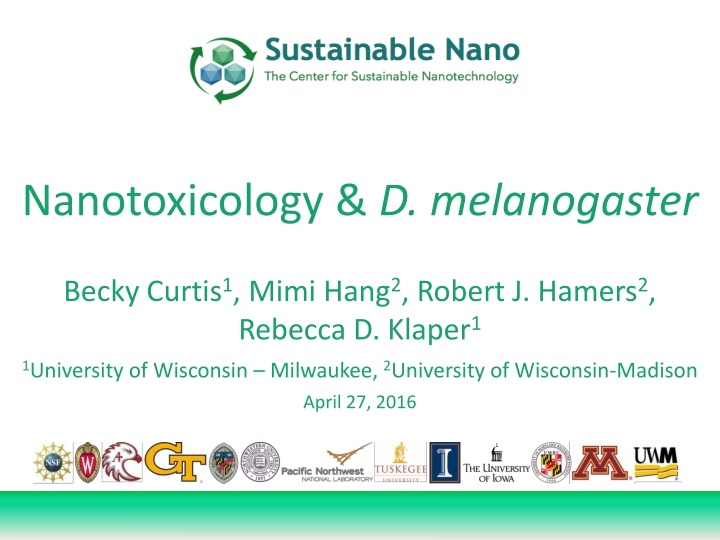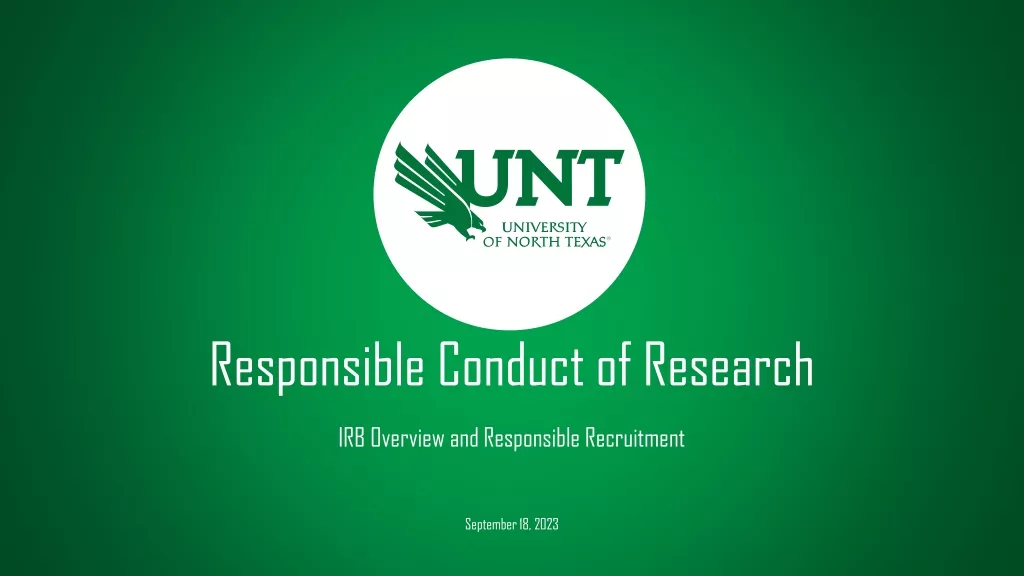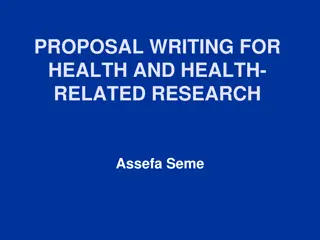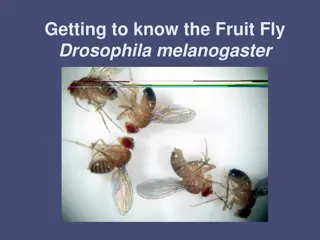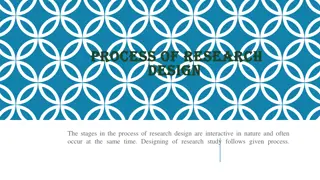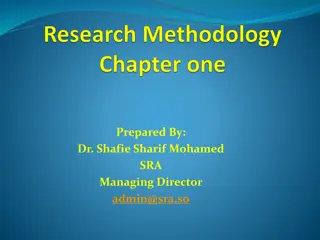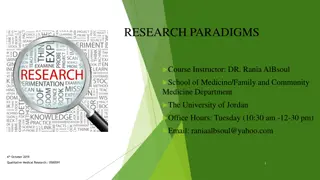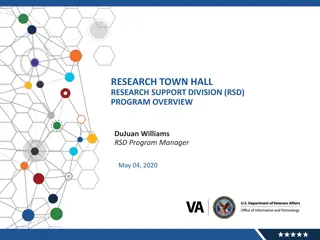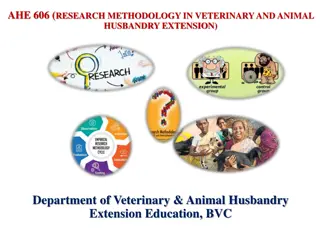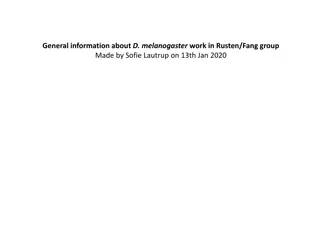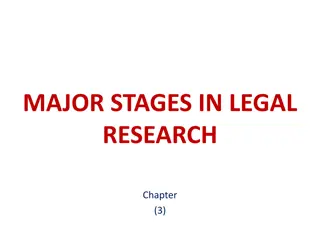Nanotoxicology and D. melanogaster Research Overview
This research delves into the use of Drosophila melanogaster in nanotoxicology studies, highlighting its advantages, life cycle, anatomy, culturing methods, and exposure protocols. The study explores existing research on nanoparticle exposures and the effects on D. melanogaster, aiming to develop efficient exposure methods for toxicological assessments.
Download Presentation

Please find below an Image/Link to download the presentation.
The content on the website is provided AS IS for your information and personal use only. It may not be sold, licensed, or shared on other websites without obtaining consent from the author.If you encounter any issues during the download, it is possible that the publisher has removed the file from their server.
You are allowed to download the files provided on this website for personal or commercial use, subject to the condition that they are used lawfully. All files are the property of their respective owners.
The content on the website is provided AS IS for your information and personal use only. It may not be sold, licensed, or shared on other websites without obtaining consent from the author.
E N D
Presentation Transcript
Nanotoxicology & D. melanogaster Becky Curtis1, Mimi Hang2, Robert J. Hamers2, Rebecca D. Klaper1 1University of Wisconsin Milwaukee, 2University of Wisconsin-Madison April 27, 2016
Nanotoxicology and D. melanogaster Why use D. melanogaster? So much is known about the fruit fly Photo courtesy of yourgenome.org Advantages Information and knowledge - Mapped genome, highly tractable - Disease genes homologous to humans: 70% - Long history of use in studies across various disciplines Short life cycle, ~10 days Goal: Develop standard exposure protocols for use in comparing toxic effects in D. melanogaster and other model organisms 2
D. Melanogaster Anatomy 4 Tatar, Post and Yu, 2014.
Culturing D. melanogaster Low-maintenance culture methods Constant 12:12-hour light-dark cycle Food: Standard Drosophila diet Anesthesia: ether or CO2 Rapid development: 10-day life cycle 1 female: 700-1000 eggs, 3000 possible 5
Embryo Collection Capacity for high-volume egg collection 6 Photo opportunities - Sean Carroll labs, University of Wisconsin Madison
Drosophila melanogaster exposures existing research Targeting larval stage to mimic sediment exposure of aquatic organisms Exposure Routes existing research Most common method: Mix nanoparticles into food media. Challenges: - Difficult to mix nanoparticles homogenously in media. Example methods vague e.g.: nanoparticles were mixed strongly into the food media - Uncertainty of exposure; are larvae able or deciding to avoid particles? One alternate exposure method found: larvae exposed in sucrose media Photo opportunity courtesy of Sean Carroll labs, University of Wisconsin Madison Goal: Develop efficient exposure method that ensures ingestion 7
Drosophila melanogaster exposures to NMC First study exposing D. melanogaster to NMC battery nanoparticles Food Media: 10 and 20 mg/L NMC 10 larvae placed in 2.5 mL of nanoparticle-treated food media Sucrose Solution: 1, 10 and 100 mg/L NMC For each treatment, 10 larvae placed in 20 uL of solution in a well plate No lethal toxicity effects: Nearly all larvae in both exposures successfully pupated and eclosed to the adult stage. Why? Do the nanoparticles have no effect? Or are larvae able to avoid them? Currently refining method to ensure exposure. Looking ahead: Examine sub lethal effects such as oxidative stress and genotoxicity. Utilize standardized method to examine impacts of nanoparticles on D. melanogaster and compare across model organisms 8
Wing Spot Assay Fig. 1. Trichomes or hairs on the wing surface of D. melanogaster (400 magnification). (A) small single mwh spot (circle showing two affected cells); (B) large single mwh spot; (C) twin spot (circle showing five cells with mwh phenotype and sixteen cells with flare phenotype). 9 E.R. Carmona et al. / Mutation Research 778 (2015) 12 21
Nanotoxicology & D. melanogaster: Summary and impact Summary: First study of effects of complex nanoparticle NMC on D. melanogaster D. melanogaster promising as a model organism Work is in initial stages; troubleshooting exposure methods, focus on aqueous exposure method Impact/Looking forward Standardizing an exposure protocol that is more efficient than currently employed methods will ensure ingestion and improve results. Resulting methods will be used as standard protocol to compare effects seen in D. melanogaster to other model organisms. Additional particles: - polyallylamine hydrochloride AuNPs (PAH-AuNP) - cetyltrimethylammonium bromide AuNPs (CTAB-AuNP) Additional endpoints: oxidative stress, genotoxicity D. Melanogaster larva 10
Questions? Thank you! Comments, input, bright ideas? curtisb@uwm.edu 11
Acute exposure of NMC nanoparticles to 1st instar larvae of C. riparius Dylan Olson, Bob Hamers, Mimi Hang, Rebecca Klaper University of Wisconsin-Milwaukee University of Wisconsin-Madison March 10, 2016
Environmental Relevance Family Chironomidae has worldwide distribution C. riparius is common in temperate lakes and rivers in Europe and N. America Chironomid midge larvae (Credit: LandCare Research) 1) Sediment dwelling Burrowing larvae, spends the great majority of its life cycle in sediment Detritivore; predictable route of exposure to lipophilic toxins 2) Degraded systems Blood worm; hemoglobin as an effective means of tolerating low O2 Dominant benthic macroinvertebrate in degraded systems Exposure conditions: 24 well plates Chironomid life cycle (from Walker 1987) 3) Food web implications Perhaps the most important prey for juvenile fish Bioaccumulation / biomagnification Convergence of these factors confer high environmental relevance Bloodworms Credit: Steve Hopkin 13
Life History / Culture Methods Family Chironomidae has worldwide distribution; And is very common in freshwater sediments. Life History Chironomid midge larvae (Credit: LandCare Research) Life cycle: 20-35 days (temp.) 4 larval instars, pupae and adult fly Emerge en masse, males first Exposure conditions: 24 well plates Culture Separate enclosures: aquatic sediment and breeding Gelatinous egg ropes separated by date All larvae exposed at 5 days post-hatch - Greatly reduces size variability 14
Project Goals Evaluate the potential toxicity of battery materials on an organism with high environmental relevance: Chironomus riparius Environmental relevance Sediment-dwelling larvae, with predictable route of exposure to lipophilic compounds. Toxicology model for sediment in aquatic systems. Very important food source for a variety of freshwater fish Chironomid midge larvae (Credit: LandCare Research) Project goals Characterize any toxic impacts of battery material on C. riparius Separate intrinsic effects of NP toxicity from physical and background effects of leached ions Redesign materials to minimize environmental impacts while maintaining commercial value Exposure conditions: 24 well plates Examine how this organism differs in toxicity compared to other experimental organisms 15
Experimental design Acute exposures conducted in a simple, water-only system. Design 24 and 48 hr. immobility assay (x1) 1st instar larvae per well; 5 day post-hatch 24 well plate, 2.5 mL per well High throughput technique Exposure conditions: 24 well plates Water and nanoparticle only, no sediment MHRW exposure media, same as Daphnia and zebrafish C. riparius adult flies collected immediately post-hatch (photo: Bioecologie) Exposure methods designed to duplicate those of Daphnia and zebrafish. Designed for comparable results between experimental organisms. 16
Direct ingestion of NMC particles Evidence of direct ingestion as a route of exposure (5 day old larvae, 1st instar) 50 ppm NMC (48 hr.) 10 ppm NMC (48 hr.) Control (24 hr.) Head capsule Gut Anal prolegs At 24 hrs., gut of control organism is visibly empty. At 10 ppm and 50 ppm, guts filled with NMC nanoparticles. 17
Acute exposure to NMC NMC apparently not acutely toxic to C. riparius NMC NMC + 10 mg/L humic acid NMC + 20 mg/L humic acid 24 hours 48 hours 1 1 Mean survival % Mean survival % 0.95 0.95 0.9 0.9 0.85 0.85 0.8 0.8 0.75 0.75 0.7 0.7 0 1 10 50 0 1 10 50 NMC mg/L NMC mg/L No dose response. Possibly a time effect. 18
Acute exposure to NMC Ion control: no effect Ionic Cobalt Cobalt (II) chloride hexahydrate 1 0.9 Mean survival % 0.8 0.7 24 hr. mean survival 0.6 48 hr. mean survival 0.5 0 10 20 40 80 160 Cobalt mg/L Direct ingestion possibly a more toxic route of exposure 19
Summary and impact Summary Direct ingestion is a realistic route of exposure NMC not acutely toxic to C. ripariusat 50 mg/L - Consequently, effect of humic acid uncertain. Ionic cobalt (Cobalt (II) chloride hexahydrate) not acutely toxic at 160 mg/L LCO was not acutely toxic at 50 mg/L; data not shown due to control survival below 80% Future Direction Assumption is that (-) charged particles are not acutely toxic to C. riparius, Exposure to (+) PAH gold nanoparticles, which were acutely toxic to C. elegans. C. riparius apparently very tolerant of acute exposure to metals, nanoparticles with negative charge. Tolerance is similar to D. melanogaster and C. elegans, All sediment dwelling organisms are tracking, appear to be good analogs for one another. One of only a few studies examining nanomaterials on this model sediment dwelling species. 20
